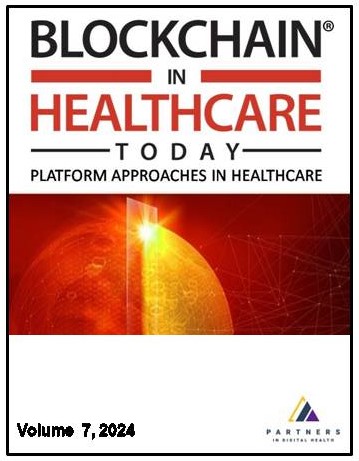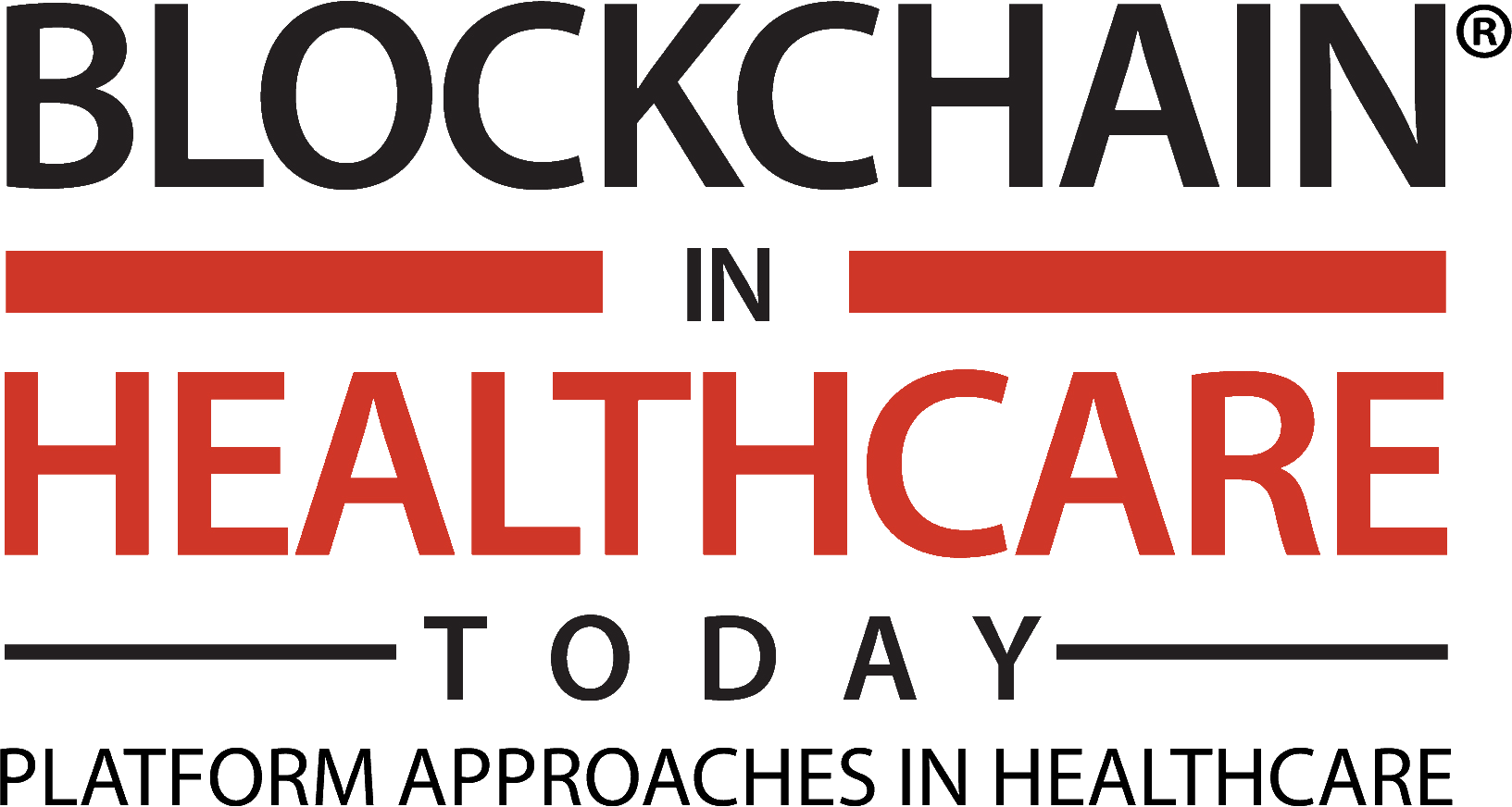Current issue

Volume 7, Issue 3, 2024
Online ISSN: 2573-8240
Volume 7 , Issue 3, (2024)
Published: 16.12.2024.
Open Access
Blockchain in Healthcare Today (BHTY) is the leading international open access journal that amplifies and disseminates platform approaches in healthcare and distributed ledger technology research and innovations. Fields of interest include healthcare information systems, leveraging data science tools and techniques, interoperability, consent mechanisms, privacy preservation, security of health data, clinical trials management, supply chain management, revenue cycle automation, immersive technologies, tokenomics, governance, regulation, network technologies, clinical computing, cryptography, and failed experiments in this expanding specialty field of research.
All issues
Contents
21.03.2022.
Original Research
Technical Design and Development of a Self-Sovereign Identity Management Platform for Patient-Centric Healthcare Using Blockchain Technology
Objective: Clinical data in the United States is highly fragmented, stored in numerous different databases, and are defined by service providers or clinical specialties rather than by individuals or their families. As a result, linking or aggregating a complete record for a patient is a major technological, legal, and operational challenge. One factor that has made clinical data integration so difficult to achieve is the lack of a universal ID for everyone. This leads to other related problems of having to prove identity at each interaction with the health system and providing basic information about demographics, insurance, payment, and medical conditions repeatedly. Traditional solutions that require complex governance, expensive technology, and risks to privacy and security of the data have failed to solve this interoperability problem adequately. We describe the technical design decisions of a patient-centric decentralized health identity management system using blockchain technology, called MediLinker, to address some of these challenges. Design: Our multi-disciplinary research group developed and implemented an identity wallet, that uses blockchain technology to manage verifiable credentials issued by healthcare clinics, banks, and insurance companies. To manage patient’s self-sovereign identity, we leveraged the Hyperledger Indy blockchain framework to store patient’s decentralized identifiers (DIDs) and the schemas or format for each credential type. In contrast, the credentials containing patient data are stored “off-ledger” in each person’s wallet and accessible via a computer or smartphone. We used Hyperledger Aries as a middleware layer (API) to connect Hyperledger Indy with the front-end, which was developed using a JavaScript framework, ReactJS (Web Application) and React Native (iOS Application). Results: MediLinker allows users to store their personal data on digital wallets, which they control. It uses decentralized trusted identity using Hyperledger Indy and Hyperledger Aries. Patients use MediLinker to register and share their information securely and in a trusted system with healthcare and other service providers. Each MediLinker wallet can have six credential types: Health ID with patient demographics, insurance, medication list including COVID-19 vaccination status, credit card, medical power of attorney (MPOA) for guardians of pediatric or geriatric patients, and research consent. The system allows for in-person and remote granting and revoking of such permissions for care, research, or other purposes without repeatedly requiring physical identity documents or enrollment information. Conclusion: We have successfully developed and tested a blockchain-based technical architecture, described in this paper, as an identity management system that may be operationalized and scaled for future implementation to improve patient experience and control over their personal information.
Daniel Toshio Harrell, Muhammad Usman, Ladd Hanson, Mustafa Abdul-Moheeth, Ishav Desai, Jahnavi Shriram, Eliel De Oliveira, John Robert Bautista, Eric T. Meyer, Anjum Khurshid
21.03.2022.
Original Research
Improving Transitions of Care: Designing a Blockchain Application for Patient Identity Management
Background: The current healthcare ecosystem in the United States is plagued by inefficiencies in transitions of patient care between healthcare providers due in large part to a lack of interoperability among the many electronic medical record (EMR) systems that exist today. Both providers and patients experience significant frustration due to the negative effects of increased costs, unnecessary administrative burden, and duplication of services that occur because of data fragmentation in the system. Blockchain technology provides a solution to mitigate or eliminate these gaps by allowing for healthcare information exchange that is distributed, auditable, immutable, and respectful of patient autonomy. Our multidisciplinary team identified key tasks required for a transition of care to design and develop a blockchain application, MediLinker, that served as a patient-centric identity management system to address the issues of data fragmentation ultimately allowing for the delivery of high value care. Methods: The MediLinker application was evaluated for its ability to accomplish various key tasks needed for a successful transition of patient care in an outpatient setting. Our team created twenty unique patient use cases covering a diversity of medical needs and social circumstances that were played out by participants who were asked to perform various tasks as they received case across a simulated healthcare ecosystem composed of four clinics, a research institution, and other ancillary public services. Tasks included, but were not limited to, clinic enrollment, verification of identity, medication reconciliation, sharing insurance and billing information, and updating demographic information. With this iteration of MediLinker, we specifically focused on the functionality of Guardianship and patient revocation of healthcare information. Additionally, throughout the simulation we surveyed participant perceptions regarding the use of MediLinker and blockchain technology to better ascertain comfortability and usability of the application. Results: Quantitative evaluation of simulation results revealed that MediLinker was able to successfully accomplish all seven clinical scenarios tested across the twenty patient use cases. MediLinker successfully achieved its goal of patient-centered interoperability as participants transitioned their simulated healthcare data, including COVID-19 vaccination status and current medications, across the four clinic sites and research institution. In addition to completing all key tasks designated, all eligible participants were able to enroll with and subsequently revoke data access with our simulated research site. A high degree of data accuracy was noted with most errors occurring due to inaccurate data entry from user input. Our qualitative analysis of user perceptions indicated that comfortability and trust with blockchain technology, such as MediLinker, grew with increased education and exposure to such technology. Conclusion: The ubiquitous problem of data fragmentation in our current healthcare ecosystem has placed considerable strain on providers and patients alike. Blockchain applications for health identity management, such as MediLinker, provide a viable solution to stem the inefficiencies that exist today. The interoperability that MediLinker provided across our simulated healthcare system has the potential to improve transitions of care by sharing key aspects of healthcare information in a timely, secure, and patent-centric fashion allowing for the delivery of consistent personalized high-value care. Blockchain technologies appear to face similar challenges to widespread adoption as other novel interventions, namely recognition, trust, and usability. Further development and scaling are required for such technology to realize its full potential in the real-world and transform the practice of modern healthcare.
Mustafa Abdul-Moheeth, Muhammad Usman, Daniel Toshio Harrell, Anjum Khurshid
21.10.2022.
Proof of Concept/Pilots/Methodologies
The Case for Establishing a Blockchain Research and Development Program at an Academic Medical Center
Objective: To develop a research and development program to study factors that will support research, education and innovation using blockchain technology for health in an effective and sustainable manner. We proposed to conduct qualitative research to generate insights for developing a market strategy to build a research lab for the promotion of blockchain technologies in health in academic environments. The team aimed to identify the key barriers and opportunities for developing a sustainable research lab that generates research, education, and application of blockchain in healthcare at an academic medical institution and test those strategies in a real-world scenario. Methods: The research team identified potential customers and stakeholders through interviews and snowball sampling. The team conducted semi-structured interviews with 4 faculty researchers, 10 industry leaders, and 6 students from a variety of disciplines and organizations. The findings of these research activities informed our understanding of the needs of stratified customers and helped identify key assets and activities the lab will have to offer to meet those needs. Results: The research insights from data analysis were used to build the business model for establishing a blockchain in health impact lab. This systematic study of areas where blockchain technology can impact health will guide the future development of research agenda for the researchers on campus. Conclusion: Based on our learnings, we hope to design a Blockchain in Health Impact Lab to serve as a platform for students and faculty to come together with industry partners and explore current challenges of blockchain in healthcare. The academic medical center’s partnership with other healthcare providers will help create real-world opportunities to demonstrate and implement new technologies.
Muhammad Usman, Verena Kallhoff, Anjum Khurshid
